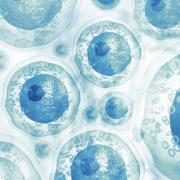Biomaterials are an essential component of regenerative medicine, as they serve as scaffolds for cell growth and tissue regeneration.
What are Biomaterials?
Biomaterials are synthetic (Polyethylene glycol (PEG), Polycaprolactore (PCL), carbon nanotubes etc.) or natural materials (Collagen, Gelatin, Fibrin, Hyaluronic Acid etc.) that can interact with biological systems. They can be used to replace, augment, or support damaged tissues and organs. Biomaterials can be designed to mimic the properties of natural tissues, such as their mechanical strength, biodegradability, and biocompatibility.
Uses of Biomaterials in Regenerative Medicine
- Hydrogels are three-dimensional networks of hydrophilic polymer chains that can absorb water and maintain their shape. They can be designed to have a similar structure to natural tissues, such as cartilage or skin. Hydrogels are used as scaffolds for cell growth and tissue regeneration, as they provide a supportive environment for cell attachment and proliferation.
- Scaffolds are porous structures that can be made from various materials, such as polymers, ceramics, or metals. They are used to support cell growth and tissue regeneration by providing a three-dimensional structure for cell attachment and proliferation. Scaffolds can be designed to have specific mechanical properties and biodegradability rates, depending on the application.
- Nanomaterials are materials that have at least one dimension in the nanometer range. They can be used to deliver drugs or growth factors to promote tissue regeneration. Nanomaterials can be designed to target specific cells or tissues, making them ideal for targeted drug delivery.
- Biodegradable polymers are polymers that can degrade into non-toxic components when exposed to biological fluids. They are used to make scaffolds and drug delivery systems that can be safely degraded and eliminated from the body. Biodegradable polymers can be designed to have specific degradation rates, depending on the application.
Conclusion
Biomaterials are an essential component of regenerative medicine, as they provide the scaffolds for cell growth and tissue regeneration. Hydrogels, scaffolds, nanomaterials, and biodegradable polymers are some of the biomaterials used in regenerative medicine.
These biomaterials are designed to mimic the properties of natural tissues and provide a supportive environment for cell growth and tissue regeneration. With continued research and innovation, biomaterials could revolutionize the field of regenerative medicine and offer new hope for patients with damaged or diseased tissues and organs.
The other two pillars of regenerative medicine, stem cells and growth factors, can be further explored in the links below.




